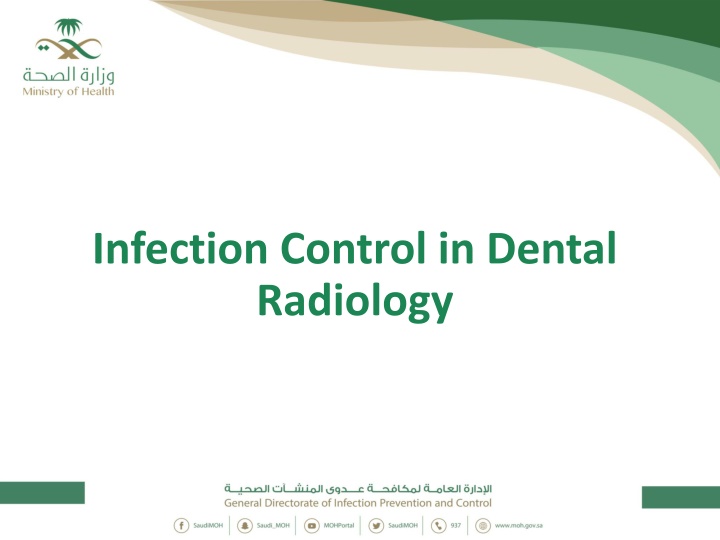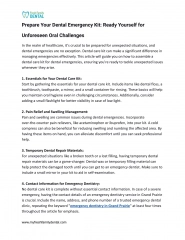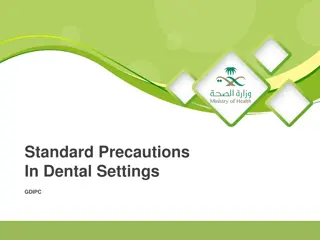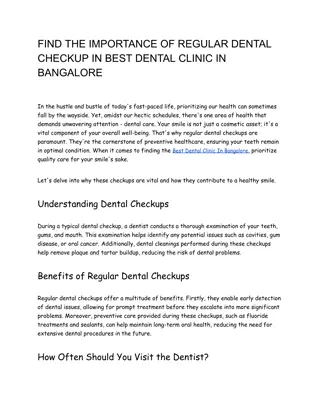
Effective Infection Control Practices in Dental Radiology
Learn about the importance of infection control in dental radiology procedures to prevent cross-contamination and ensure patient safety. Discover the need for standard precautions, the use of surface barriers, items to touch during radiography, sterilization requirements, disinfection guidelines, and personal protection measures. Follow these practices to maintain a clean and safe environment in your dental radiology practice.
Download Presentation

Please find below an Image/Link to download the presentation.
The content on the website is provided AS IS for your information and personal use only. It may not be sold, licensed, or shared on other websites without obtaining consent from the author. If you encounter any issues during the download, it is possible that the publisher has removed the file from their server.
You are allowed to download the files provided on this website for personal or commercial use, subject to the condition that they are used lawfully. All files are the property of their respective owners.
The content on the website is provided AS IS for your information and personal use only. It may not be sold, licensed, or shared on other websites without obtaining consent from the author.
E N D
Presentation Transcript
Infection Control in Dental Radiology
The Need for Standard Precautions Even though radiography procedures are not likely to result in a blood exposure, proper infection control methods are still recommended. Remembering this fact will help you to prevent cross-contamination, even during exposure of radiographs.
Surface Barriers Barriers are an excellent option during radiographic procedures. For any equipment with electrical components, a barrier is a preferable alternative. Exposure buttons should be covered with a barrier Barriers are also a timesaver for the clinician and can be used to also cover the parts of the x-ray machine that will be touched during procedure.
What do I touch during radiography procedures? Film holder or positioning device Lead apron Exposure button/control panel X-ray machine and cone (PID) Films Processor Chair controls
Which items require sterilization? Every effort should be made to use products that can be heat-sterilized. If they are not heat tolerant, be sure to use a chemical sterilant and follow the instructions regarding kill time . Ideally, a plan should be in place to replace these older devices with the newer ones that are made to be sterilized.
Which items can be disinfected? Only flat, smooth, hard surfaces are suitable for disinfection. Most x-ray equipment meets these qualifications with the exception of the exposure button/control panel. If the lead apron is completely smooth in the area that would be touched with contaminated gloves, it may be disinfected.
Infection control procedures before exposure Before bringing the patient into x-ray room: clean and disinfect all surfaces you will touch including chair and counter Cover this surfaces with plastic wrap
Personal protection Gloves should be worn at all times Operators must wash hands when change Gloves between patients
Operatory breakdown after taking radiographs Leave the operatory neat and clean Dismantle the instruments and place them in the containers provided Dispose of other contaminated items in the red plastic bag Wipe all contaminated surfaces with a disinfectant do not spray Turn off x-ray unit and put tube head against the wall
Panoramic and lateral ceph infection control guidelines Before and after exposure wipe down the patient positioning area and handles of the panoramic unit and head- and ear- positioning devices on the lateral ceph unit






















